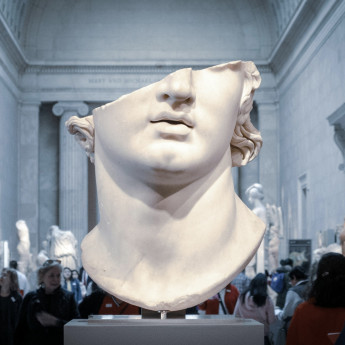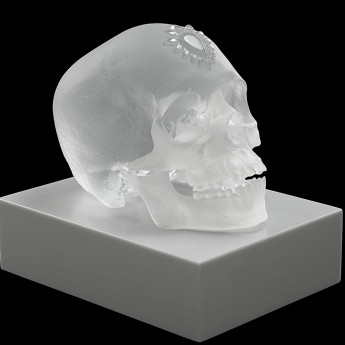
Details
Artist
Styles
Published by Hermit Press, Düsseldorf. Special edition to accompany the book "Sarajevo 96" from 2001. Sarajewo 17 (2005) by Günther Uecker is a haunting and visceral screenprint that forms part of a special limited edition accompanying the book Sarajevo 96. Created in the aftermath of the Bosnian War, Uecker’s work here is an abstract meditation on destruction, trauma, and memory. Rendered in stark black strokes on a pale background, the composition consists of a dense accumulation of gestural marks, suggesting shattered forms or strewn debris. The dark, jagged elements overlap in chaotic directions, evoking the violence of conflict and the emotional residue of devastation. While Uecker is renowned for his tactile nail works, this print achieves a similarly intense physicality through two-dimensional mark-making. The expressive energy conveys a sense of urgency and anguish, yet also acts as a quiet tribute to resilience. Published by Hermit Press in Düsseldorf in an edition of 60, each print is hand-signed and numbered, serving as both artwork and a memorial to Sarajevo’s pain and endurance.
Sarajewo 17, 2005
form
Medium
Size
48 x 43 cm
- Inches
- Centimeters
Edition
Price
Details
Artist
Styles
Published by Hermit Press, Düsseldorf. Special edition to accompany the book "Sarajevo 96" from 2001. Sarajewo 17 (2005) by Günther Uecker is a haunting and visceral screenprint that forms part of a special limited edition accompanying the book Sarajevo 96. Created in the aftermath of the Bosnian War, Uecker’s work here is an abstract meditation on destruction, trauma, and memory. Rendered in stark black strokes on a pale background, the composition consists of a dense accumulation of gestural marks, suggesting shattered forms or strewn debris. The dark, jagged elements overlap in chaotic directions, evoking the violence of conflict and the emotional residue of devastation. While Uecker is renowned for his tactile nail works, this print achieves a similarly intense physicality through two-dimensional mark-making. The expressive energy conveys a sense of urgency and anguish, yet also acts as a quiet tribute to resilience. Published by Hermit Press in Düsseldorf in an edition of 60, each print is hand-signed and numbered, serving as both artwork and a memorial to Sarajevo’s pain and endurance.
- Recently Added
- Price (low-high )
- Price (high-low )
- Year (low-high )
- Year (high-low )
What is ‘light and space’?
The Light and Space Movement refers to loosely affiliated art movements connected to minimalism, geometric abstraction, and op art that originated in Southern California in the 1960s. Greatly influenced by artist John McLaughlin, these artists focused on sensory phenomena such as light, perception, and space as central elements of their work. They also incorporated cutting-edge technologies from the aerospace and engineering industries to develop light-filled and sensuous objects, creating immersive experiences that emphasize the viewer's perception.






































